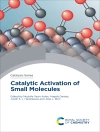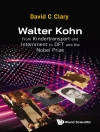This thesis provides a comprehensive description of methods used to compute the vibrational spectra of liquid systems by molecular dynamics simulations. The author systematically introduces theoretical basics and discusses the implications of approximating the atomic nuclei as classical particles. The strengths of the methodology are demonstrated through several different examples. Of particular interest are ionic liquids, since their properties are governed by strong and diverse intermolecular interactions in the liquid state. As a novel contribution to the field, the author presents an alternative route toward infrared and Raman intensities on the basis of a Voronoi tessellation of the electron density. This technique is superior to existing approaches regarding the computational resources needed. Moreover, this book presents an innovative approach to obtaining the magnetic moments and vibrational circular dichroism spectra of liquids, and demonstrates its excellent agreement withexperimental reference data.
Tabla de materias
Introduction.- Theoretical Background.- Methodological Developments.- Applications.- Conclusion and Outlook.- Computational Details.- Mathematical Derivations.- The Method of Imaginary Time Propagation.
Sobre el autor
Martin Thomas studied chemistry at the University of Jena, where he graduated with a diploma thesis about the theoretical calculation of surface-enhanced Raman scattering in summer 2012. For his Ph D, he joined the research group of Prof. Dr. Barbara Kirchner at the University of Leipzig. In the beginning of 2013, he followed the group to the Mulliken Center for Theoretical Chemistry at the University of Bonn, where he defended his Ph D thesis in spring 2016. His research was focused on the simulation of vibrational spectra by ab initio molecular dynamics techniques, providing detailed insight into the infrared, Raman, and vibrational circular dichroism spectra of liquid systems.












